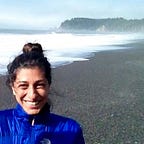A Journey Through West Bank’s Best Produce
A compilation of visual narratives from the field: #usaidwbg Storytelling Series
The fertile soil of the West Bank provides an ideal landscape for dozens of crops. Recognizing its potential, USAID invests in the Palestinian agriculture sector and partners with farmers to boost the local economy.
For several years, USAID has helped Palestinian people grow more and better food: partnering with farmers who are innovators and entrepreneurs; providing the knowledge, tools and skills to compete in a global economy; introducing innovative technologies to reduce water use; raising the quality and quantity of produce; and bringing Palestinian exports to the world.
From flowers to almonds: Once a year, you may notice the West Bank landscape dotted with pink and white flowers. This means almond trees are in bloom and vitamin E-rich almonds will be coming soon. USAID started working in the Palestinian almond sector in 2012, helping more than 160 almond farmers produce and sell more almonds. Palestinian almond oil is now sold internationally, including to markets in the United States and Europe.
Jericho dates: USAID helps West Bank date companies with packaging and labeling so they can meet internationally recognized standards and improve marketing. In just two years, these companies export five times as much as before.
Olive oil of hope: To Palestinian farmers, olive trees represent economic opportunities and hold cultural significance: Thousands of families in the West Bank depend on the olive oil industry.
Olive oil has also been an opportunity for peacebuilding. USAID has brought together 2,600 Palestinian and Israeli olive farmers, mill operators and olive oil distributors to share farming methods, improve skills and increase olive oil production and profit through global exports. Farmers were able to triple their harvest with USAID’s help after learning about supplementary irrigation techniques.
Parsley, thyme and basil: USAID started investing in the herb sector in 2008 with five farmers. Within three years, the number of herbs farmers in the West Bank rose to 23. When pests threatened to halt exports of fresh Palestinian herbs in 2010, USAID helped integrate modern technologies to reduce pest infestation and production costs, while raising the quality of the herbs to internationally recognized standards.
While the Palestinian fresh herb industry was almost nonexistent in 2008, today it employs more than 1,200 people. USAID has helped Palestinian herbs reach new markets. USAID works with 90 percent of the herb farmers in the West Bank, whose exports nearly tripled in two years.
Palestinian farmers are now introducing new crops with high export potential, including strawberries, red potatoes, broccoli, mangoes, fruit trees and grapes.
Since 2012, USAID has helped 680 farmers and agribusinesses in generating $122 million in sales and leveraged $86 million of private sector investment in the West Bank. USAID’s investment is growing markets, creating jobs and helping the Palestinian economy stand on its own.
This blog is part of USAID’s West Bank and Gaza storytelling series. It is a compilation of stories of individuals, families and communities working to improve their societies — towards growth and progress. They are the inspiring stories of people we work with.
Explore more stories from the Middle East. Check out more video portraits at USAID’s storytelling hub. Follow @USAIDWBG @USAIDMiddleEast and @USAID.
About the Author
Sahar Kalifa is a Senior Communications Advisor at the U.S. Agency for International Development’s Bureau for Legislative and Public Affairs. Most recently, she led several PR campaigns for USAID to advance its work globally, including the agency’s first regional communications initiative. Previously, she served as a writer, producer, and creative strategist developing new content for USAID’s storytelling and multimedia platforms focusing on human interest videos and stories from around the world. Prior to that, she served as the Director of Communications for USAID’s Israeli-Palestinian Program.
